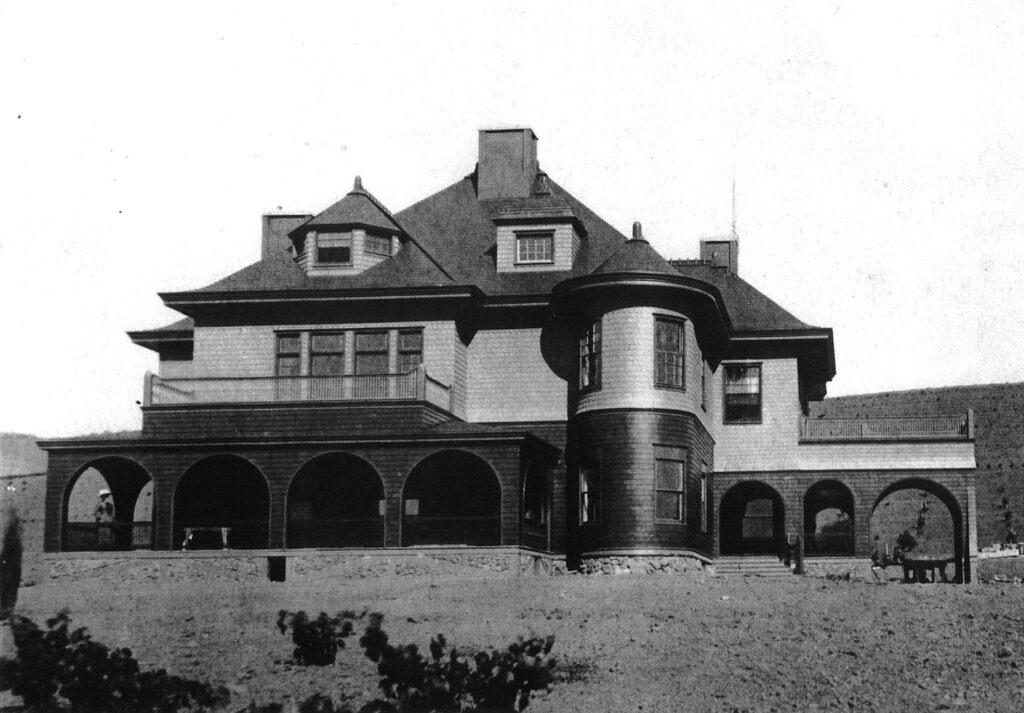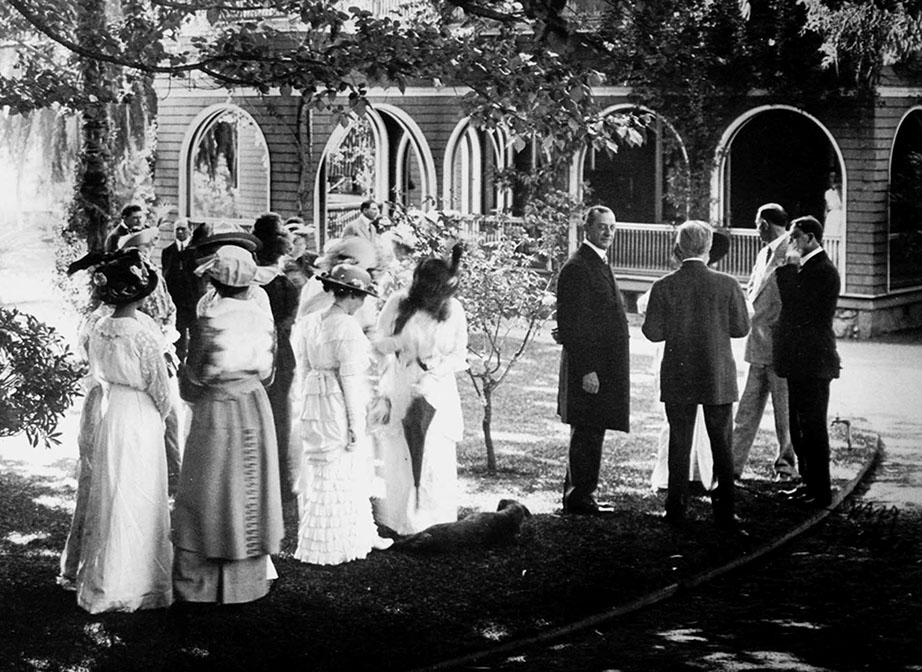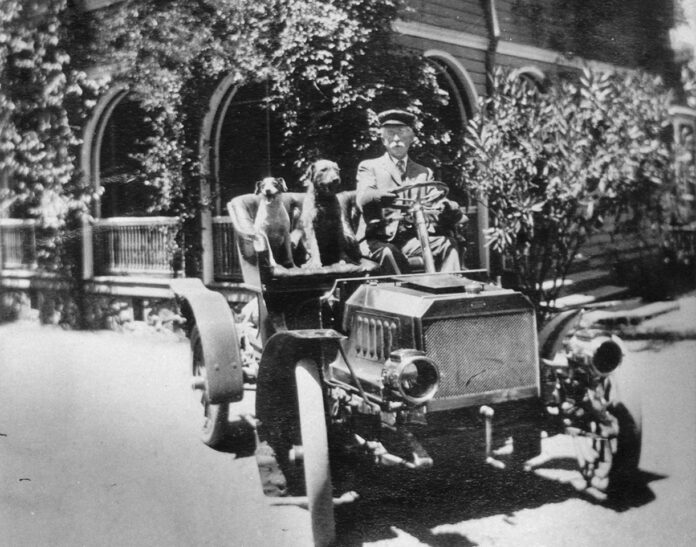Probably the man who first transformed our Evergreen hillsides the most was William Wehner, a German immigrant who made his fortune in Chicago as a producer of large-scale panoramic paintings for public viewing across the nation. Wehner was listed as a farmer on immigration records when he arrived in1860 from Hannover, Germany. Thirty years passed before he had a chance to apply his farming skills and astute management skills to a large-scale agricultural venture.
Wehner was well connected in the east, had a keen business sense and was a creative and adaptive thinker—able to think out of the box (before “the box” became a cliché).
Before undertaking his winery venture, he had his brother in the Santa Clara Valley exploring the possibilities of growing grapes in this near-perfect climate in a valley with ideal growing conditions.
After the purchase of the McCarty ranch, the Wehner brothers’ venture began when Ernest took charge of establishing the orchards and vineyards in Evergreen while William provided the financial backing.Under Ernest’s expert guidance, 300 acres of 175 imported grape varieties—grafted on resistant root stock—were planted as well as 5,000 fruit trees. Soon the former grassy ranchland hills were producing grapes, apricots, nectarines, peaches, prunes, pears and olives. (As our golfers know, many of those trees still exist on the golf course.)
William stayed in Chicago for the first few years to wrap up his business there while his new hillside home, Lomas Azules, was built on the Evergreen property. William, true to his meticulous nature, chose the best architects he could find—a pair of rising stars, partners Burnham and Root of Chicago. (Their names were later enshrined in architectural history as the visionaries who transformed the skylines of every city in the world by developing the predecessors to tall steel-frame skyscrapers.) Lomas Azules, albeit a minor example of their work, had some remarkable design features that caused the locals to sit up and take notice, including eight indoor fireplaces, three indoor toilets and advanced structural design features that baffled most of the local builders. The house was completed in 1891 at an original cost of $20,000. And upon its completion a parade of locals came out to admire it. Wehner named his vineyard and winery and associated operations Highland Vineyards.
Wehner’s operations were described in a 1937 edition of a wine trade journal, Wines & Vines:
…Being still a young man, with an exceptionally keen mind, tremendous energy, and a strong will to succeed in this undertaking, Mr. Wehner set out to study the requirements for the proper development of his holdings. He contacted and consulted with every successful grower and vintner and university authorities to that end and his vineyards, winery and orchards. He likewise secured the best planting of trees, vines and shrubs, many having been imported from different parts of the world, and, with an exceptional eye for beauty, he developed a five-acre park of rare beauty, in which he located “Villa Vista,” the home residence. It commanded a view of the “Valley of Heart’s Delight,” mountains, bay and, on a clear day, the hills of San Francisco.
Wehner set out to produce wines of exceptional quality under his label. He succeeded as a vintner and helped build the foundation for the excellent reputation of California wines. Wehner was described in a 1982 book about the history of winegrowing in Santa Clara Valley, Like Modern Edens, by Charles Sullivan, as, “…the most important individual in regional winegrowing 1905 – 1915.”
Not only was Wehner a local pioneer, he was a major player in the development of the California wine industry and staunch promoter of Santa Clara Valley wines. His business acumen and knowledge of winemaking and the science behind it gave him the momentum to survive an economic crisis in the 1890s and a significant grapevine blight that followed. By 1901, when most of the smaller winemakers were on the verge of failure, Wehner produced 200,000 gallons of wine with plans for expanding his operation further.
As Wehner aged it became apparent to him that the work was getting too heavy for a man his age, so in 1915, he sold the property to a former Chicago businessman Albert Haentze. Haentze expanded the vineyards and continued to operate under the name of Rancho Villa Vista until he sold it to the University of California for use as a viticulture station.
Meanwhile, Wehner moved off the property and faded into relative obscurity. Wehner and wife Elizabeth had only one daughter, Ida, who died in 1973, at the age of 100. There were other Wehner relatives that continued to live in the area, but none were involved in winemaking. After the sale, Wehner hoped that his name would remain as his legacy attached to the road now known as Yerba Buena Road. It was reported that he had signs installed on road markers naming it “Wehner Road.” Haentze petitioned the county in 1917 to change the name of the road to “Villa Vista Road.” With only a handful of Wehner’s friends registering their opposition, the name Wehner Road was purged from maps by the 1920s.
The Roots of Evergreen series will be published the third week of each month and posted in the Online Villager. Series compiled and written by S.R. Hinrichs. The following article will feature Albert Haentze and the University of California, the next owners of the vineyard.








